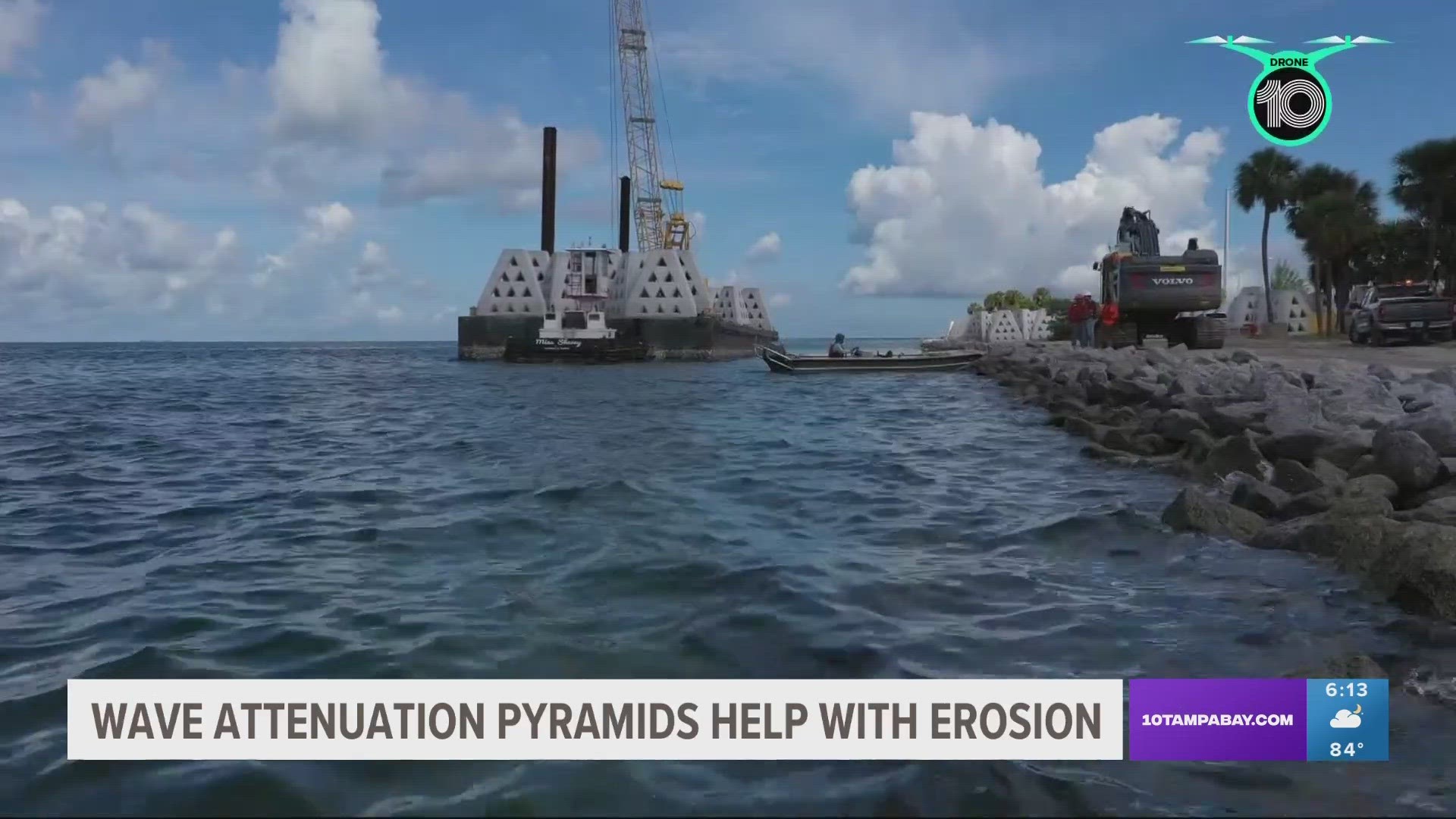TERRA CEIA, Fla. — If you've driven over the Sunshine Skyway Bridge lately, you might have noticed the concrete pyramids lined on the water and near the roadway — those are called wave attenuation devices, or WADs.
Florida Department of Transportation officials shared more details about the cement pyramids and how they will help both Interstate 275 and provide environmental benefits for marine life.
The project began after FDOT began brainstorming ideas on how to prevent erosion caused by waves splashing over the seawall which was damaging the access road and the guardrails in the area, District Drainage Design Engineer for FDOT District 1 Brent Setchell said in a news conference Wednesday.
Before deciding on the concrete pyramids, engineers looked at implementing large boulders to break the water but due to the depth of the water near the Sunshine Skyway Bridge, large footprint and the significant cost they ended up going a different route.
This is how FDOT decided on an innovative design with the WADs.
The WADs are being placed on the east and west sides of the south end of the Sunshine Skyway Bridge. Some are 10-and-a-half feet that will go on the eastern side and the others are 8-and-a-half feet on the western side. This is due to the depth of the water.
For now, crews are only putting the WADs on the Manatee County side of the Sunshine Skyway Fishing Pier, however, other areas in the future are also being considered.
"These are designed for resiliency and environmental benefits," FDOT District 1 project manager Sergio Figueroa said.
The WADs are made of fiber-reinforced concrete to handle the marine environment and are designed to deflect wave energy, as well as, promote seagrass growth and provide a habitat for local fish.
"Seagrass provides critical environmental functions," FDOT District 1 Environmental Permits Coordinator Nicole Monies said. "They maintain water clarity, provide nutrient uptake and stabilize the seafloor giving visitors a much prettier view. It also provides food and shelter for marine life like Florida manatees, red fish, snook, crustaceans and other shellfish."
Seabirds could also perch on the WADs and eat fish away. Those watching the project call it a "win-win" for its purpose.
The WADs are placed about 300 to 400 feet offshore, according to FDOT District One drainage design engineer Brent Setchell who explained how they work previously in March. Construction costs were about $5.5 million, Setchell said.

